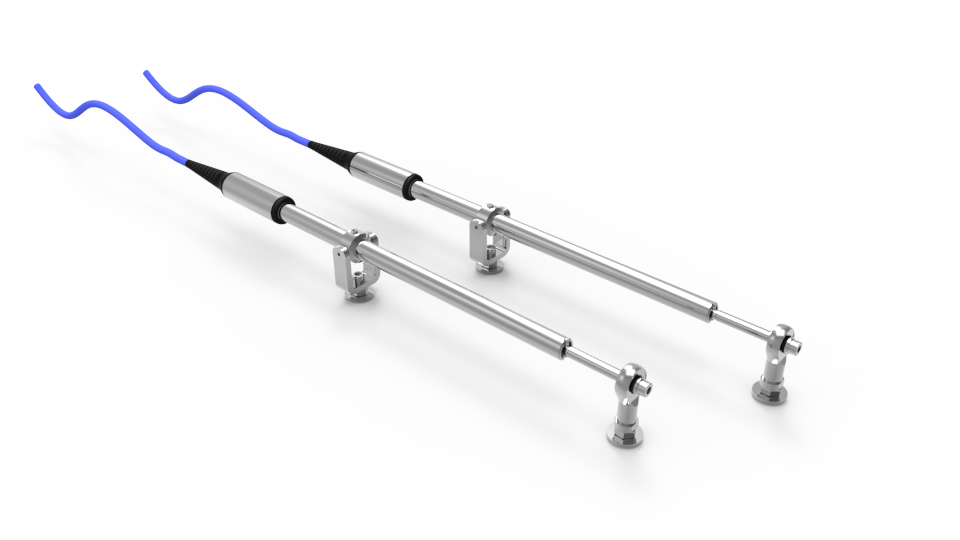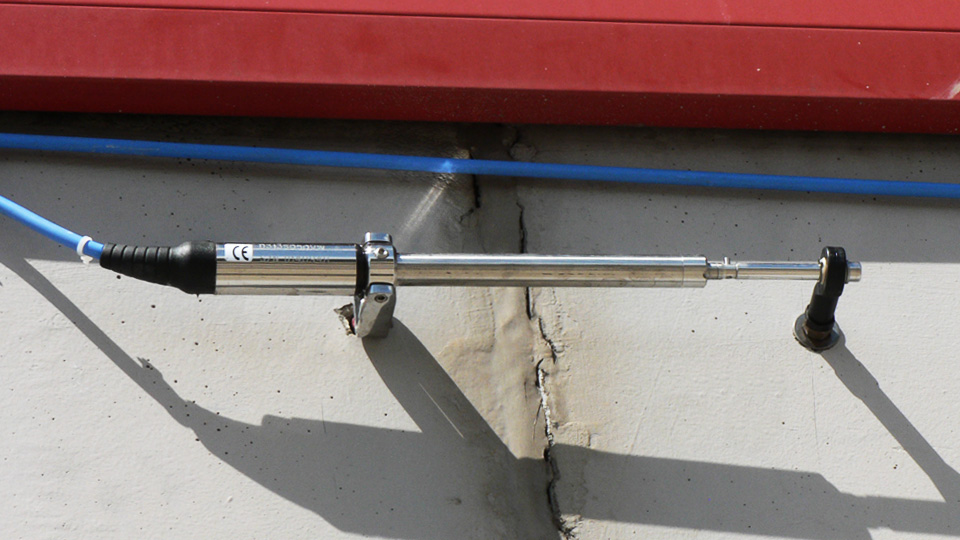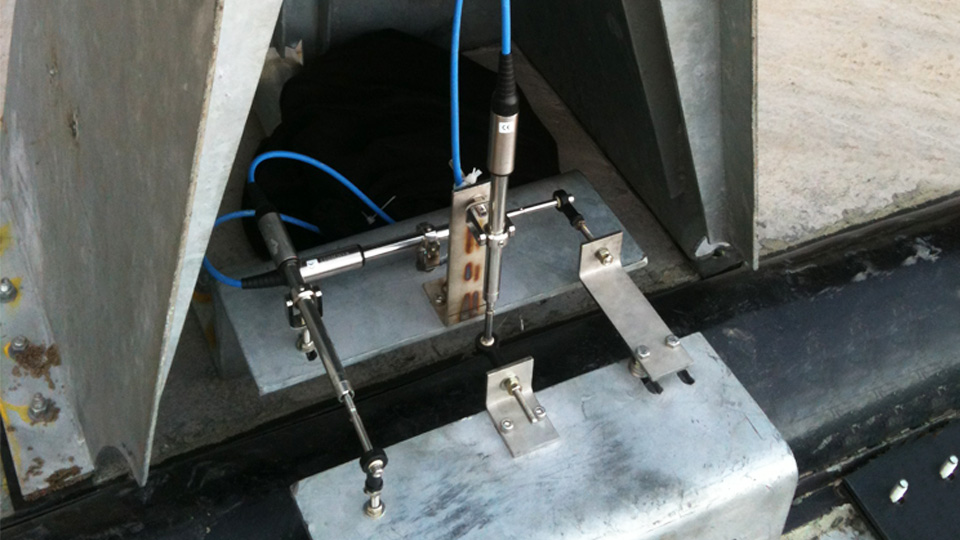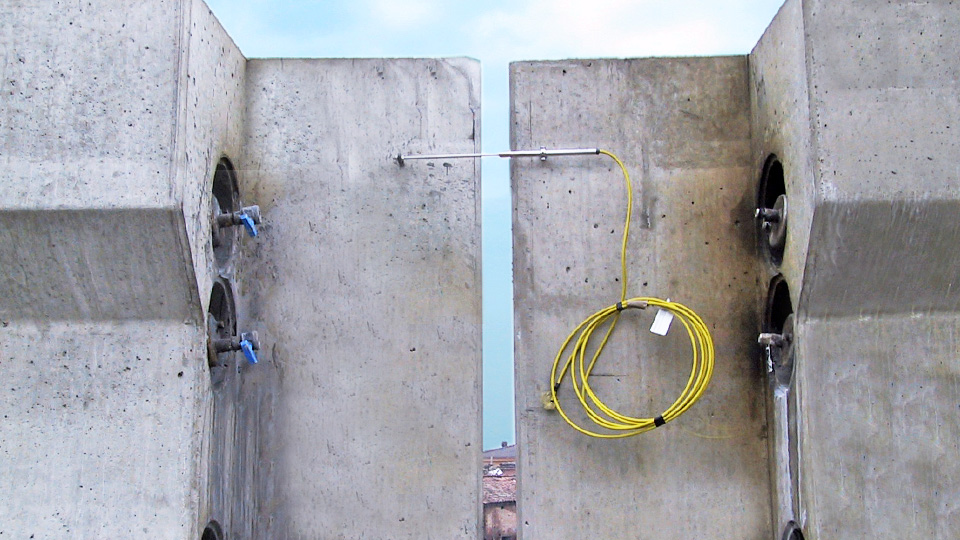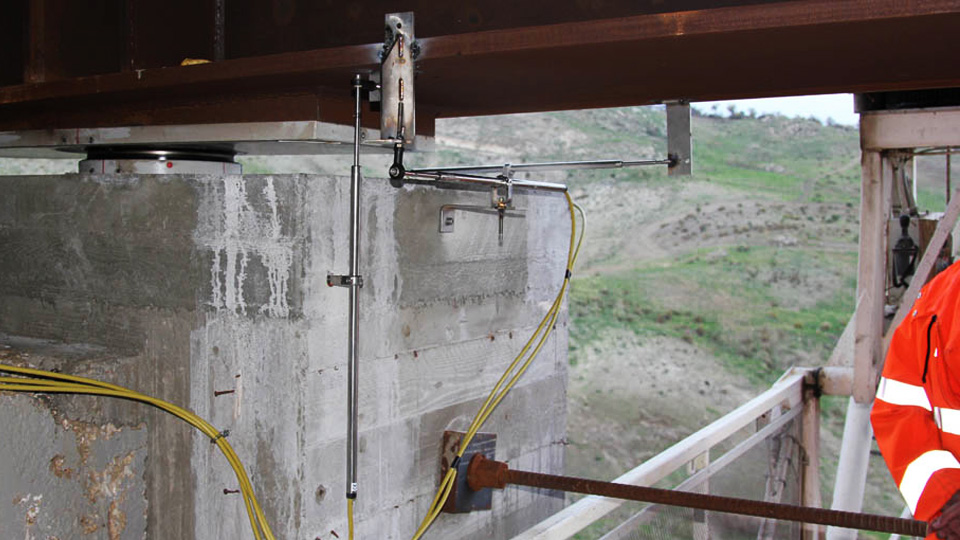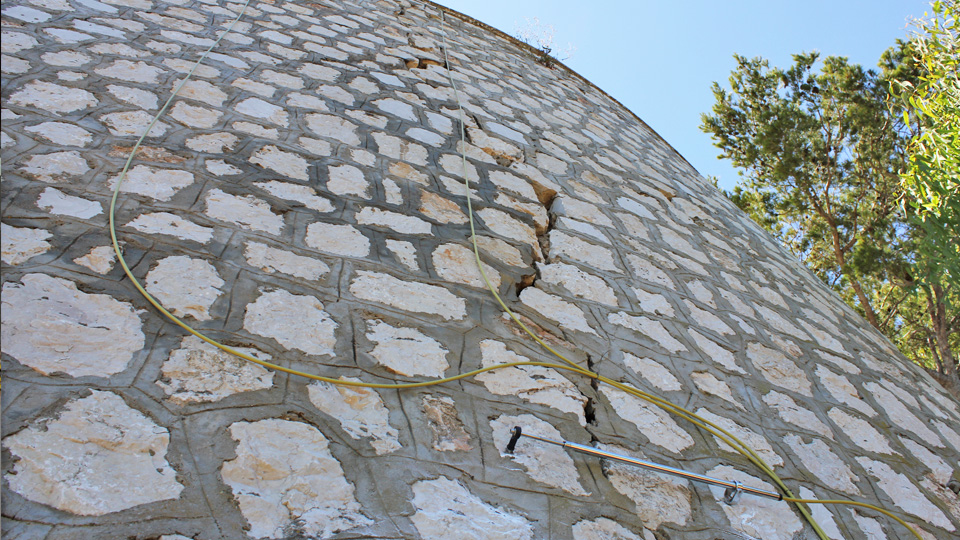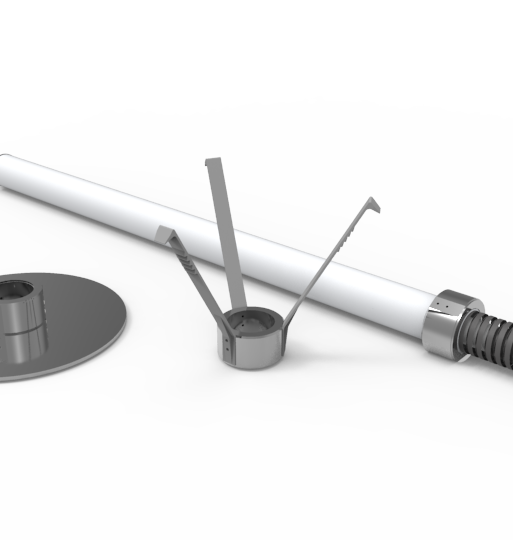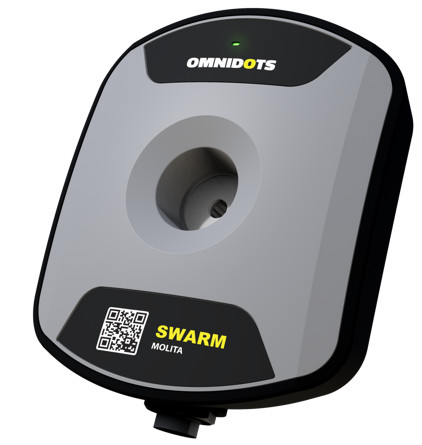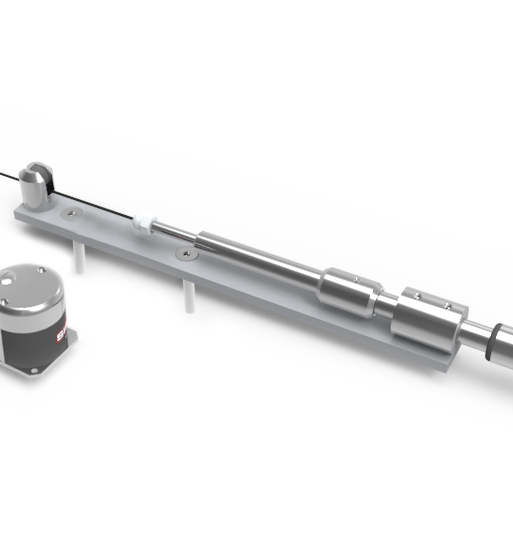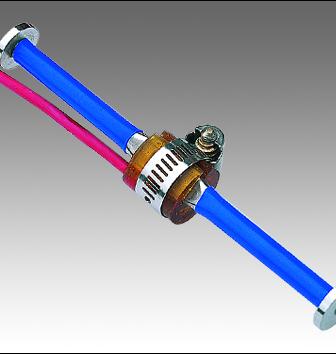Crackmeters and Jointmeters
The crackmeters and jointmeters are intended to monitor movements across surface joints or cracks, mainly in concrete structures or rocks. Crackmeter consists of a vibrating wire or potentiometer displacement transducer housed in a stainless steel telescopic body with two anchoring points. These anchors have self-lubrificating ball joints allowing lateral movements up to ±10° in the orthogonal planes (Y - Z axis) not influencing the operation of the jointmeter.
| Measurement principle | vibrating wire with built-in thermistor | Linear potentiometer |
|---|---|---|
| Range | 10, 25, 50, 100, 150mm | 25, 50, 100, 150, 200mm |
| Accuracy Pol. MPE | < ±0.50% FS (10mm) < ±0.50% FS (25mm) < ±0.30% FS (50mm) < ±0.30% FS (100mm) < ±0.30% FS (150mm) |
< ±0.30% FS (25mm) < ±0.30% FS (50mm) < ±0.30% FS (100mm) < ±0.15% FS (150mm) < ±0.15% FS (200mm) |
| Output signal | frequency (displacement), Ohm (thermistor) | 4-20 mA current loop (displacement) |
| Display Resolution | 0.02% FS (with Sisgeo readout) | 0.01% FS (with Sisgeo readout) |
| Typical frequency range | 1500 - 2800 Hz | |
| Power supply | 12 - 24 V DC | |
| Operating temperature | - 20°C +80°C | - 20°C +80°C |
| Protection | IP68 up to 100 kPa (tested in a static condition, upper value on request) | IP68 up to 100 kPa (tested in a static condition, upper value on request) |
